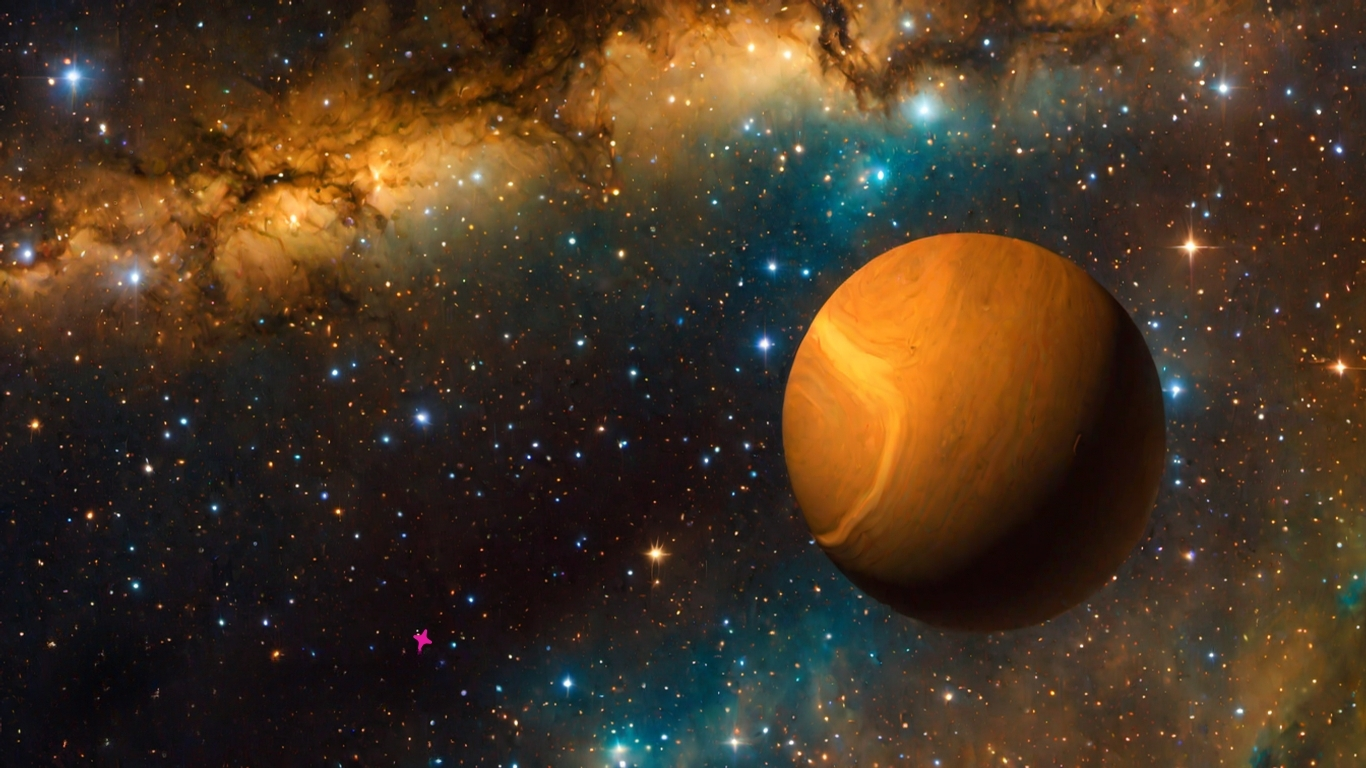Tales of Cosmic Youth: JWST Reveals Secrets of Protostellar Outflows from Herbig-Haro 211
Dive into the heart of cosmic nurseries with the JWST's lens, as we unveil the mesmerizing revelations behind Herbig-Haro 211's youthful dance of protostellar outflows. Explore the enigmatic beauty of star formation and witness the birth of celestial marvels like never before.
SciPhar Editor
Tuesday, 29 August 2023

ETFLIN original image generated by AI
In a remarkable leap forward for astrophysical observation, scientists have employed the powerful capabilities of the James Webb Space Telescope (JWST) to unravel the intricacies of a young protostar known as Herbig-Haro 211 (HH211). Situated approximately 321 parsecs away within the Perseus Molecular Cloud, HH211 stands out as one of the nearest and most enigmatic protostellar outflows in our cosmic neighborhood. Its strategic proximity and youthful nature make it an ideal candidate for JWST's high-resolution infrared observations.
The primary focus of this study, led by T.P. Ray (1), revolved around HH211's central object, HH211-mm, a Class 0 protostar, which is still in the early stages of its formation. Despite its modest mass of 0.08 solar masses, HH211-mm is busily accreting material from a surrounding torus composed of gas and dust. The telescope's Near-Infrared Camera (NIRCam) and Near-Infrared Spectrograph (NIRSpec) played pivotal roles in capturing this protostar's intricate details.
A captivating image generated by combining data from NIRCam revealed an array of bow shocks stretching to the northwest and southeast, accompanied by a slender bipolar jet, all powered by HH211-mm. These images, boasting a five to ten times higher resolution than any previous observations, offered unprecedented insights into the protostellar dynamics. The emission predominantly arose from the 4.69μm H2 0–0 S(9) line, with additional contributions from various molecular transitions like CO.
The study delved deeper into HH211's southeast lobe, employing NIRSpec and Mid-Infrared Instrument (MIRI) for integral field spectroscopy. The resulting spectra unveiled a rich array of emission lines, notably from the H2 molecule and CO isotopologues. One remarkable discovery was the presence of CO(1–0) fundamental R and P-branch transitions between 4.3 and 5.1μm, shedding light on the complex molecular processes at play.
This research also highlights the origins of the infamous "Green Fuzzy" emission detected in past infrared observations. Previously attributed to shock-excited emission from molecules like H2, the JWST's capabilities allowed scientists to discern that this phenomenon is mainly due to CO fundamental rovibrational emission.
Moreover, scientists uncovered intricate details about the protostar's motion by comparing the velocities of HH211's outflows using images taken over two decades. Velocities in the innermost structures were around 80-100 km/s, with noticeable variations, particularly in the northwest region. This intriguing observation hints at the dynamic interaction between the protostellar outflows and their surrounding environment.
Perhaps most fascinatingly, these findings emphasize that the outflows from early protostars like HH211 primarily consist of slowly moving molecular beams. This contrasts with the more mature counterparts, where faster-moving atomic and ionized species dominate the outflow emissions.
The JWST's revolutionary observations of HH211 have expanded our understanding of protostellar evolution and highlighted the instrument's capabilities to probe the cosmos at unprecedented levels of detail. As our cosmic neighbor HH211 continues to captivate astronomers, the insights gained from this study will undoubtedly serve as a cornerstone for future research in star formation and protostellar dynamics.
Reference
1. Ray, T.P., McCaughrean, M.J., Caratti o Garatti, A. et al. Outflows from the Youngest Stars are Mostly Molecular. Nature (2023). https://doi.org/10.1038/s41586-023-06551-1

 ETFLIN
Notification
ETFLIN
Notification





